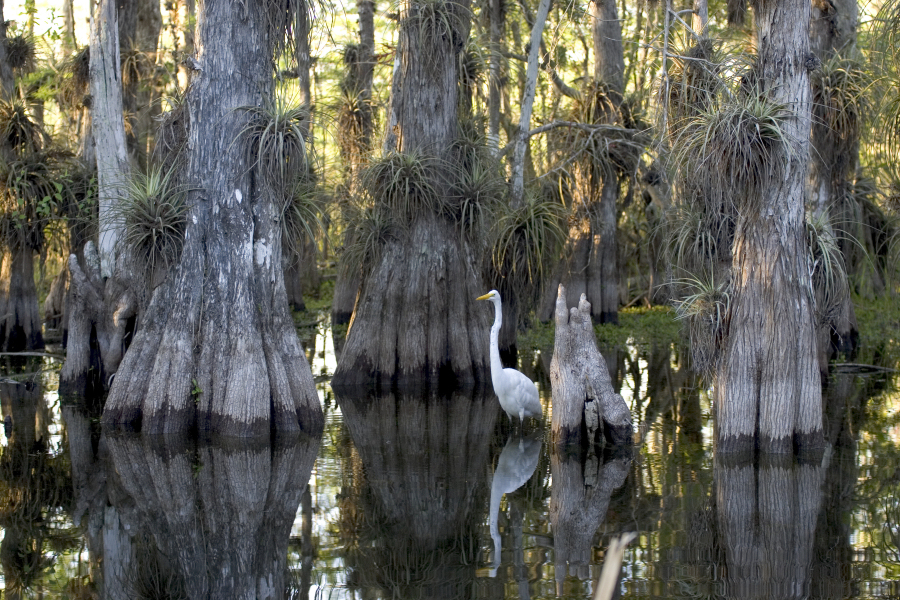10, 000 YEAR OLD SUBMERGED FOREST FOUND OFF OF UK BY RECREATIONAL DIVER
 Photo: National Park Service
Photo: National Park Service
"Submarine Timber" sounds like a contradiction in terms to most people. However the old American Admiralty Bureau actually once worked a case for the State of Louisiana that involved "submarine timber rustling" . That case dealt with old growth bald cypress logs and stumps from old growth cypress swamp forests logged in the 19th century. Some of the logs were lost in trying to ferry them out of the swamps, eventually sank and were buried in the mud at the water's bottom. In the case we worked the timber was on the bottom of a water column that only existed seasonally. The land between the natural or man made levee and the water's edge during low river stages in Louisiana is known as the "batture". Before the U.S. Army Corps pf Engineers began planting willow forests to keep these lands from washing away during their annual period of submergence by higher river stages much of the batture was covered with old bald cypress. During the 19th century most of this old growth bald cypress was harvested. The batture is state property in Louisiana. Stumps that remained on the batture remained property of the state. Likewise old growth logs that fell from transport barges or otherwise found their way to batture lands are considered property of the state.
As time went by the old growth cypress often called "iron wood" due to it's weight, strength, and being impervious to rot became more and more valued. A 50 year old bald cypress tree looks little different from a 600 year old tree but the character of the wood is not the same. Bald Cypress at what is now considered marketable age is little more durable or hard than pine. It can be stained to look like the older wood, and treated to prevent rot. But it is basically no more durable or strong than pine. A seller's market has emerged in salvaged cypress be it from an old building that was torn down, or a long submerged log or stump. As a revenue source the State of Louisiana licenses a few companies to prospect for and salvage such timber from the batture lands. When the state became aware that some small operators were salvaging cypress from the battures unlicensed the American Admiralty Bureau's litigation intelligence section was contacted for assistance in obtaining evidence for prosecution of such unlicensed removals. Using commercially available satellite imagery the American Admiralty Bureau was able to observe a number of small towboat and barge units drag lining the submerged batture during high water. Thus the term "submarine timber" signaled to us a viable commercial resource. Another common term to describe commercially viable submarine timber is sinker wood. When we first saw the linked to story related to this post we thought that someone had found such a resource off of Great Britain.
As it turns out what was discovered submerged wasn't logs or stumps of super durable timber lost one hundred years ago, but a drowned oak forest that was submerged by rising sea levels as the last ice age was ending 10,000 years ago. This was a forest of petrified wood , a stone forest. The submerged forest will probably be able to tell scientists a great deal about the earth's climate and vegetation during and at the end of the last ice age. No fortunes are to be had in salvaging this "Submarine timber", but thanks to this find by a recreational diver we bet that over the next few decades a lot of money will be spent by researchers combing this submarine forest for the secrets of climate science that it contains.
Click Here to read the story of the UK Discovery: http://indiatoday.intoday.in/story/underwater-forest-dawn-watson-rob-spray-uk-norfolk-north-sea/1/416910.html
No comments:
Post a Comment